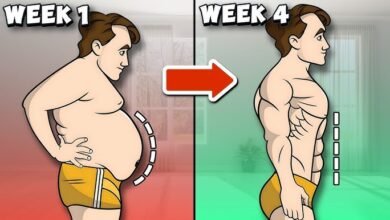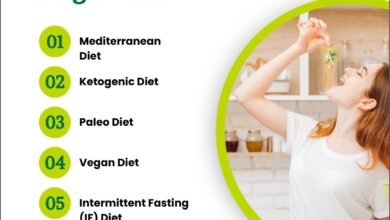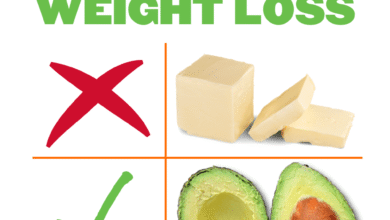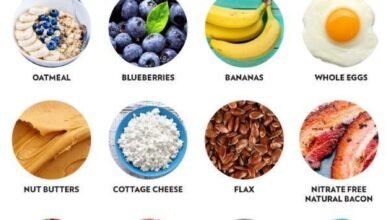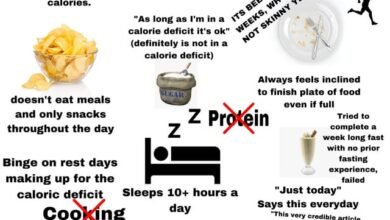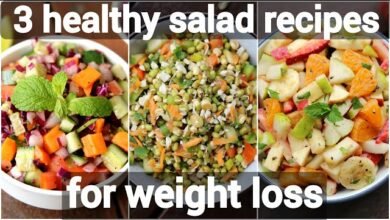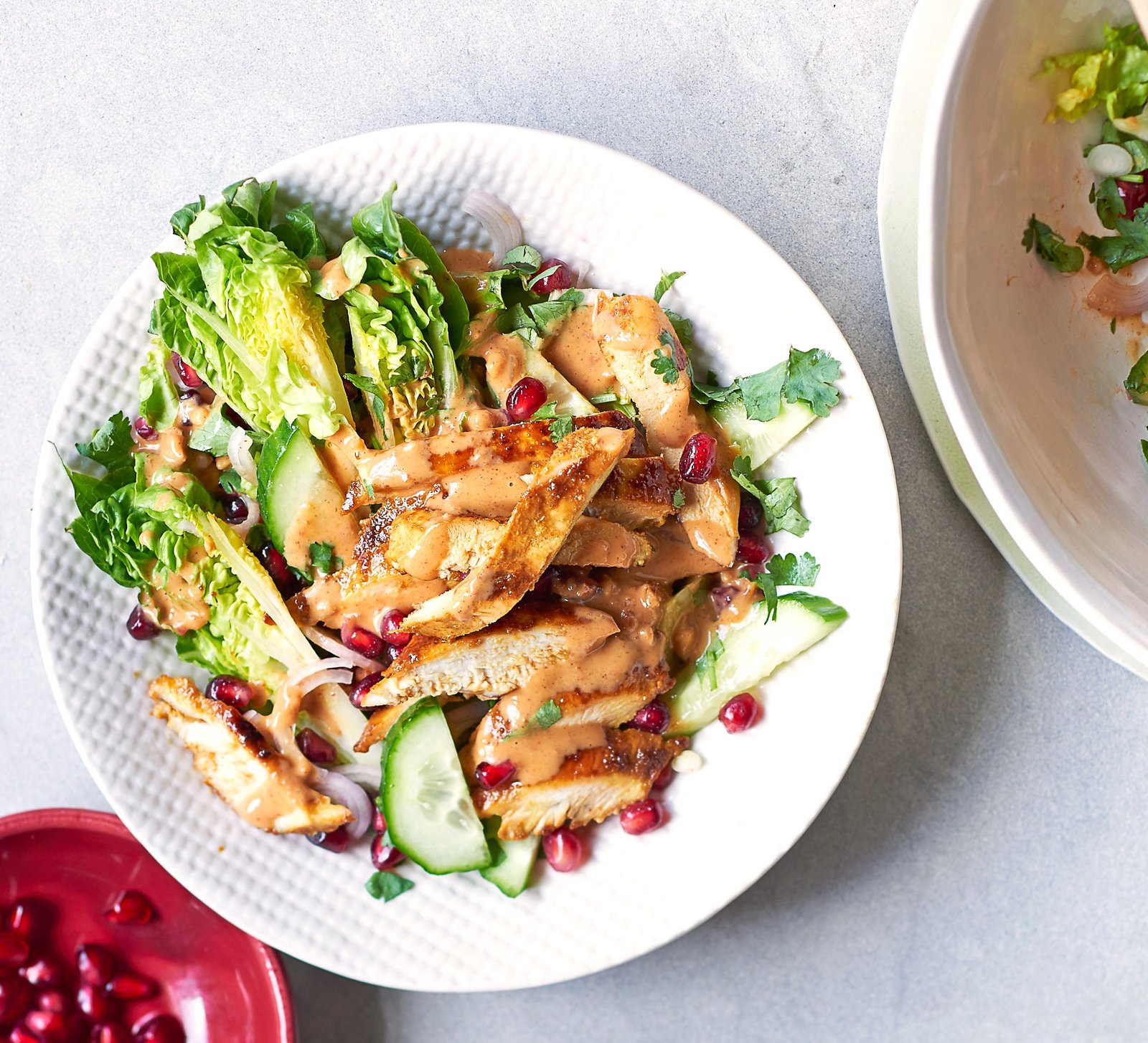
How to Make Healthy Food for Weight Loss: Easy Tips
Are you tired of complicated diets that leave you feeling hungry and frustrated? Discovering how to make healthy food for weight loss doesn’t have to be a chore.
Imagine enjoying delicious meals that not only satisfy your taste buds but also help you shed those extra pounds. Intrigued? You’re in the right place. This guide will reveal simple, tasty recipes and tips that fit seamlessly into your lifestyle.
You’ll learn how to transform everyday ingredients into weight loss allies, making your journey to a healthier you both enjoyable and sustainable. Ready to unlock the secrets to effortless weight loss through food? Keep reading, and let’s get started!
Balanced Meal Planning
Crafting healthy meals for weight loss involves choosing lean proteins, whole grains, and plenty of vegetables. Focus on portion control and balanced nutrients to support your goals. Simple, nutritious ingredients create satisfying dishes that aid in shedding extra pounds.
Planning balanced meals is crucial for effective weight loss. It’s not just about cutting calories—it’s about nourishing your body with the right nutrients while managing portion sizes. By focusing on balanced meal planning, you can enjoy a variety of foods, stay satisfied, and still meet your weight loss goals.Nutrient-rich Ingredients
Choosing nutrient-rich ingredients is a game-changer for your meals. Think about adding colorful vegetables, lean proteins, and whole grains to your plate. Each of these elements contributes essential nutrients that support your health and weight loss journey. Consider swapping white rice for quinoa or brown rice to add fiber and protein to your meals. Leafy greens like spinach and kale offer vitamins and minerals with very few calories. Experiment with different vegetables to keep your meals exciting and nutritious.Portion Control Strategies
Portion control is key when aiming for weight loss. It’s easy to overeat even healthy foods if portions are too large. Use smaller plates and bowls to naturally reduce portion sizes without feeling deprived. One strategy is to fill half your plate with vegetables, a quarter with lean protein, and the remaining quarter with whole grains. This method helps you balance your macronutrients effortlessly. Avoid eating straight from the package, as it’s harder to track how much you’re consuming. Measure out servings beforehand and put the rest away to prevent mindless munching. Do you ever feel surprised by how much you eat when not paying attention? Balanced meal planning doesn’t have to be complicated. It’s about making simple choices that prioritize your health and well-being. As you try these strategies, notice how your body responds and adjust accordingly. What new ingredients will you explore today to make your meals healthier?
Credit: www.youtube.com
Smart Cooking Techniques
Are you looking to shed a few pounds without giving up delicious food? Smart cooking techniques can transform your meals into healthy, low-calorie wonders while still satisfying your taste buds. With a focus on low-calorie cooking methods and healthy ingredient substitutions, you can create meals that support weight loss and make you feel great. Let’s dive into these strategies and see how simple tweaks can make a big difference.
Low-calorie Cooking Methods
Have you ever considered how much oil you use in your cooking? Cutting back on oil can significantly reduce your calorie intake. Instead, try steaming, boiling, or grilling your meals. These methods enhance natural flavors without adding extra fat.
Baking is another great option. It’s perfect for veggies and proteins. Use a baking sheet lined with parchment paper to skip the oil altogether. Roasted vegetables taste great and help you feel full longer.
Consider using an air fryer. It crisps food without the need for excessive oil. You can enjoy the taste and texture of fried foods with far fewer calories. The air fryer could be your new best friend in the kitchen!
Healthy Ingredient Substitutions
Swapping out ingredients can drastically change the nutritional profile of your meals. Replace white rice with cauliflower rice. It’s lower in calories and carbs, and it’s surprisingly satisfying.
Looking for a creamy texture without the cream? Use Greek yogurt instead. It adds richness to dishes like pasta sauces and dips without the fat. Plus, it’s packed with protein.
Ever tried using zucchini noodles? They’re a fantastic substitute for pasta. You get the same texture with fewer carbs and calories. Spiralizers are inexpensive and easy to use, making this swap a no-brainer.
Which cooking methods or substitutions have you tried? Experimenting in the kitchen can lead to exciting discoveries. Embrace these changes and see how they can transform your meals and your health. After all, healthy eating can be both delicious and rewarding!
Incorporating Superfoods
Incorporating superfoods into your diet can transform your weight loss journey. Superfoods are nutrient-rich and low in calories. They provide essential vitamins and minerals. They help boost metabolism and improve overall health. These foods are easy to include in daily meals. They offer a flavorful way to support weight loss goals.
Benefits Of Superfoods
Superfoods are packed with antioxidants. They fight free radicals and reduce inflammation. This supports a healthy body. They are rich in fiber, aiding digestion. Fiber keeps you full longer, reducing the urge to snack. Many superfoods contain healthy fats. These fats are crucial for brain health and hormonal balance.
Superfoods can improve heart health. They lower cholesterol and blood pressure. They provide energy without added sugars. This helps maintain stable blood sugar levels. Superfoods often contain high levels of vitamins. They support immune function and skin health.
Easy Superfood Recipes
Start with a simple quinoa salad. Combine cooked quinoa with chopped cucumbers, tomatoes, and spinach. Add lemon juice and olive oil for dressing. This dish is refreshing and full of nutrients.
Try a berry smoothie for breakfast. Blend blueberries, strawberries, and Greek yogurt. Add a spoonful of chia seeds for extra fiber. This smoothie is delicious and energizing.
Prepare a kale and avocado wrap. Use whole-grain tortillas and fill them with sliced avocado, kale, and a sprinkle of flaxseed. This wrap is satisfying and easy to make.
Make a superfood stir-fry. Sautee broccoli, edamame, and bell peppers. Add tofu and a splash of soy sauce. Serve over brown rice for a wholesome meal.
Mindful Eating Habits
Crafting healthy meals can support weight loss. Focus on fresh ingredients like vegetables, lean proteins, and whole grains. Portion control and mindful eating enhance satisfaction while reducing overeating.
Embracing mindful eating habits can significantly influence your journey toward healthy weight loss. By tuning into your body’s natural signals and making conscious decisions about what and how you eat, you can transform mealtime into an opportunity for nourishment and self-care. Let’s explore some practical ways to cultivate mindful eating habits.Listening To Hunger Cues
Your body is constantly communicating with you. It tells you when it’s hungry and when it’s full. Yet, how often do you truly listen? Next time you feel the urge to eat, pause and ask yourself: “Am I really hungry?” Consider if it’s actual hunger or perhaps boredom or stress. Make a habit of checking in with your body’s hunger cues before reaching for a snack. Tuning into these signals can help prevent overeating and make your food choices more intentional. This practice encourages you to eat only when you genuinely need nourishment, aligning with your weight loss goals.Slowing Down Mealtime
Eating quickly can lead to consuming more food than your body requires. Slowing down allows you to savor each bite and better recognize when you’re full. Try setting your fork down between bites or sipping water throughout your meal. These small actions can help pace your eating and improve digestion. Imagine dining with a friend and engaging in a meaningful conversation. Notice how this naturally slows your eating pace. By extending mealtime, you give your body the chance to signal fullness, preventing unnecessary calorie intake. Mindful eating doesn’t just support weight loss; it enhances your overall relationship with food. What steps will you take today to eat more mindfully?Quick And Easy Recipes
Eating healthy does not have to be hard. You can make delicious meals that support weight loss. Quick and easy recipes save you time and effort. They also keep you on track with your goals. Below are ideas for simple meals for every time of day.
Simple Breakfast Options
Breakfast is important. Start your day with oatmeal topped with berries. It is filling and nutritious. Another option is a smoothie with spinach, banana, and almond milk. It is quick and energizing. You can also make scrambled eggs with tomatoes and spinach. This dish is protein-rich and satisfying.
Nutritious Lunch Ideas
Lunch should keep you going through the day. Try a quinoa salad with chickpeas, cucumber, and avocado. It is light yet full of flavor. A whole-grain wrap with turkey and veggies is also a good choice. It is easy to prepare and eat on the go. Consider a bowl of lentil soup with carrots and celery. It is warm and comforting.
Light Dinner Suggestions
Dinner should be light but tasty. Grilled chicken with steamed broccoli is simple and healthy. A stir-fry with tofu, bell peppers, and snap peas is another option. It is colorful and nutritious. You can also bake salmon with lemon and asparagus. This dish is flavorful and easy to make.
:max_bytes(150000):strip_icc()/EWL-one-skillet-garlicky-salmon-and-broccoli-beauty-537_preview_maxWidth_4000_maxHeight_4000_ppi_300_quality_100-3d591a74c1c24995a76cf4215ad9d5aa.jpg)
Credit: www.eatingwell.com
Meal Prepping For Success
Planning meals in advance helps create balanced food choices for weight loss. Include lean proteins, whole grains, and colorful vegetables. Preparing meals in advance saves time and keeps healthy options ready.
Meal prepping is a game-changer for anyone looking to eat healthy and lose weight. By planning and preparing your meals in advance, you save time and reduce the temptation to grab unhealthy options. It puts you in control, ensuring you have nutritious meals ready when you need them. ###Efficient Grocery Shopping
Start with a list. Before you head to the store, know exactly what you need. This helps you avoid impulse buys and ensures you have all the essentials for your meal prep. Stick to the perimeter of the store. That’s where you’ll find fresh produce, lean meats, and dairy products. These are the building blocks of healthy meals. Don’t shop when you’re hungry. It sounds simple, but it makes a difference. You’re less likely to pick up junk food if your stomach isn’t doing the shopping. ###Batch Cooking Tips
Choose recipes that are easy to multiply. Think about dishes like soups, stews, or grilled chicken that can be cooked in large quantities. It saves time and effort. Invest in quality storage containers. They keep your meals fresh and make organizing easy. Look for options that are microwave and dishwasher safe. Set aside a dedicated cooking time. Whether it’s Sunday afternoon or Tuesday night, having a routine helps. You’ll get faster and more efficient with practice. Meal prepping is about setting yourself up for success. Have you ever noticed how much easier it is to make healthy choices when they’re already made for you? Try it out and feel the difference.Hydration And Its Importance
Hydration plays a crucial role in healthy weight loss. Drinking enough water can help control hunger and boost metabolism. Consuming hydrating foods like fruits and vegetables not only aids weight loss but also supports overall health.
Staying hydrated is crucial for weight loss and overall health. Water helps your body burn fat more efficiently and keeps your metabolism running smoothly. But hydration isn’t just about drinking water—it’s also about being mindful of what you eat and drink throughout the day.Water-rich Foods
Adding water-rich foods to your diet can boost your hydration levels while offering essential nutrients. Foods like cucumbers, watermelon, and lettuce are not only low in calories but also packed with water. Eating these can help you stay full longer, reducing the temptation to snack on less healthy options. Think about how often you reach for a snack simply because you’re thirsty. Next time, try grabbing a slice of watermelon or a crunchy piece of cucumber instead. You’ll quench your thirst and curb your hunger at the same time.Reducing Sugary Drinks
Sugary drinks can sabotage your weight loss efforts without you even realizing it. Sodas and sweetened teas add unnecessary calories and sugar to your diet. By cutting down on these drinks, you can significantly reduce your daily calorie intake. Consider swapping your usual soda with sparkling water or a refreshing herbal tea. Not only will you reduce your sugar intake, but you’ll also avoid the energy crashes that sugary drinks often cause. When you’re hydrated with the right drinks, you’ll feel more energetic and motivated to stick to your weight loss goals. Hydration is more than just a habit—it’s a lifestyle choice that can lead to healthier eating patterns. Have you ever noticed how much better you feel when you’re properly hydrated? Make small changes today, and watch how they transform your journey to better health and weight loss.
Credit: www.bbcgoodfood.com
Staying Motivated
Staying motivated on your weight loss journey can be challenging. Many people start with enthusiasm but lose steam along the way. Keeping your motivation high is essential for reaching your health goals. With the right strategies, you can maintain your focus and enthusiasm.
Tracking Progress
Recording your daily meals and activities helps you stay on track. Use a journal or an app to log what you eat. Note down your exercise routines too. Seeing your achievements boosts motivation. It reminds you of the progress you’ve made. Celebrate small victories to keep your spirits high.
Setting Realistic Goals
Set goals that are achievable and specific. Unrealistic goals can lead to disappointment. Aim for gradual changes instead of drastic ones. For example, target losing one pound a week. This keeps you focused and reduces stress. Re-evaluate your goals regularly and adjust if needed. This helps maintain a positive outlook.
Frequently Asked Questions
What Is The Healthiest Meal You Can Make For Weight Loss?
Grilled chicken with quinoa and steamed vegetables is a healthy meal for weight loss. Include leafy greens, such as spinach or kale, for added nutrients. Use spices instead of sauces to keep calories low. Opt for lean protein and whole grains to stay full longer and support healthy eating.
What Is The Healthiest Food To Eat When Trying To Lose Weight?
Leafy greens, lean proteins, and whole grains are ideal for weight loss. They offer high nutrients and fiber while being low in calories. Incorporating foods like spinach, chicken breast, quinoa, and berries can help you feel full longer and support your weight loss goals effectively.
How To Lose 20 Pounds In A Month?
To lose 20 pounds in a month, follow a strict diet and exercise plan. Eat lean proteins, vegetables, and whole grains. Drink plenty of water and avoid sugary drinks. Engage in regular cardio and strength training workouts. Prioritize sleep and manage stress for better results.
Consult a healthcare professional before starting.
What Is The 3-3-3 Rule For Weight Loss?
The 3-3-3 rule involves eating three meals a day, spaced three hours apart, with each meal around 300 calories. This routine helps maintain steady energy levels, control hunger, and promote weight loss. It’s important to focus on balanced nutrition and portion control within this framework.
Conclusion
Healthy eating can be simple and enjoyable. Focus on fresh ingredients. Keep meals balanced with protein, carbs, and healthy fats. Try new recipes to keep things exciting. Portion control helps manage weight effectively. Drink plenty of water throughout the day.
Plan meals ahead to avoid unhealthy choices. Listen to your body’s hunger signals. Stay active for better results. Enjoy the journey, not just the destination. Small steps lead to big changes over time. Remember, healthy food fuels your body and mind.
Eating well supports your weight loss goals. Start today and feel the difference.
